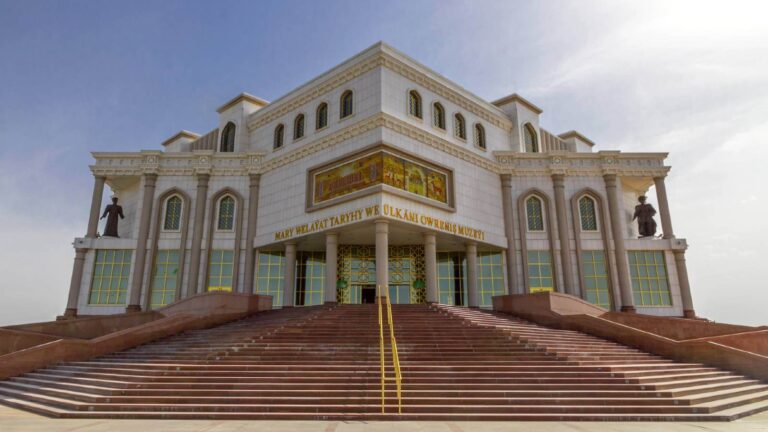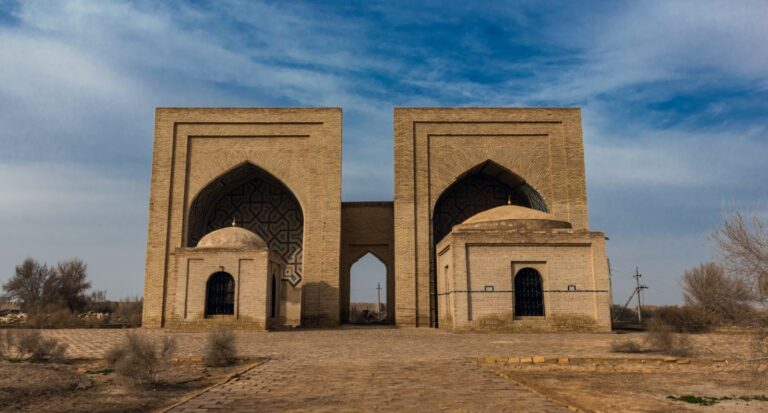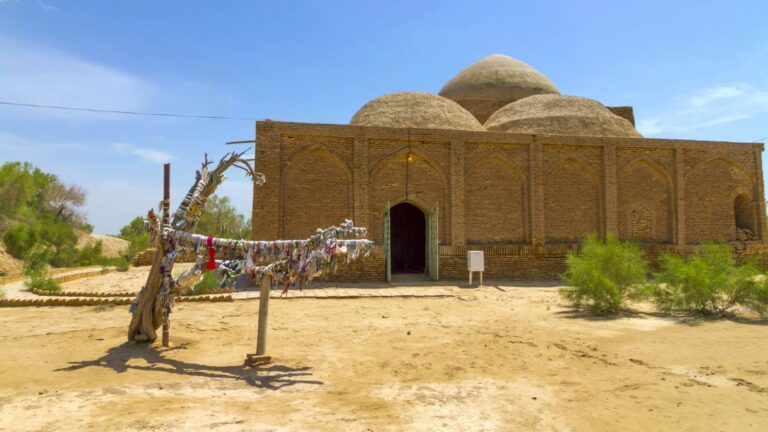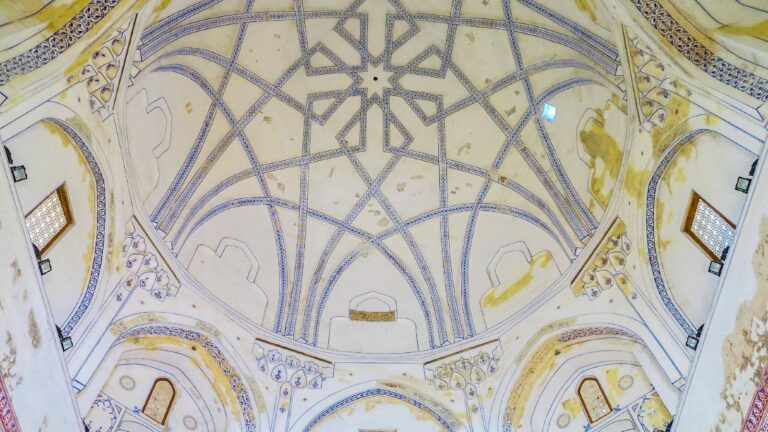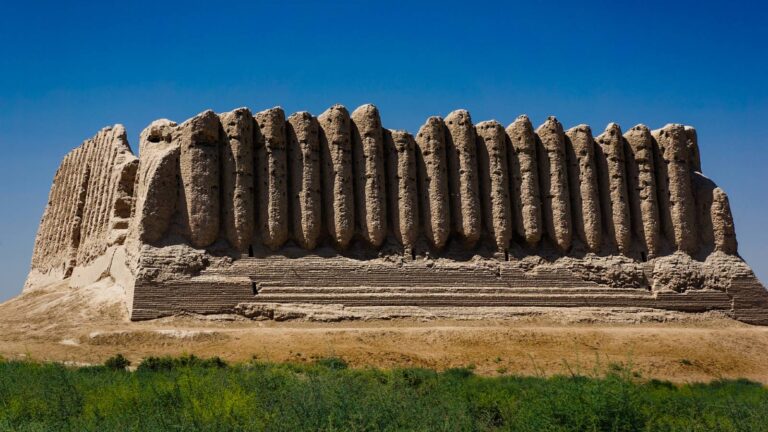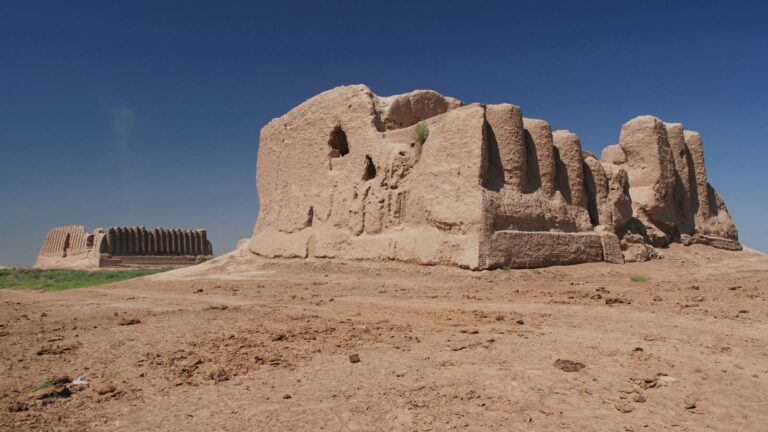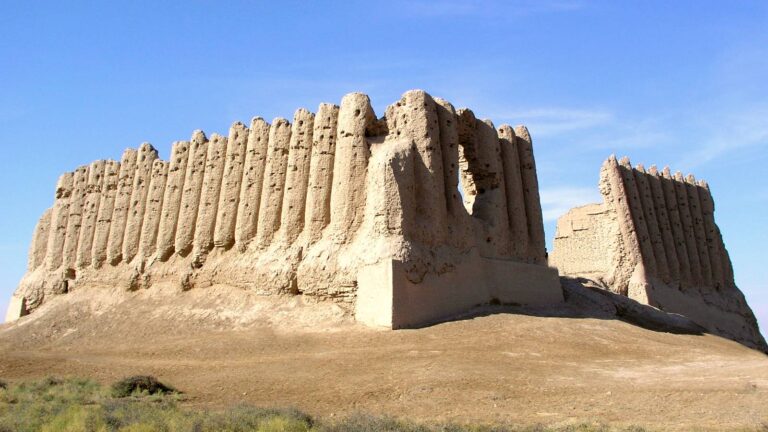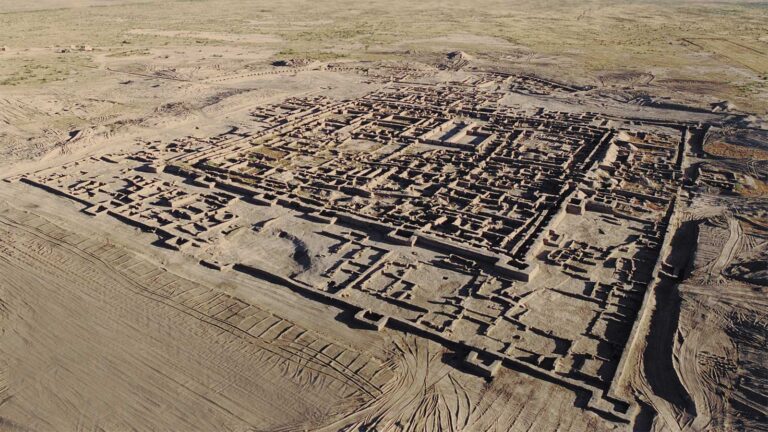Getting There
Gyaur-Kala is located 6 km north of the Bayramali city’s railway station. The best way to get here is by taxi. Mary International Airport is located 20 km from Bayramali.
What to Expect
Gyaur-Kala ancient settlement located within the Ancient Merv Historical and Cultural Park is inscribed on the (UNESCO) World Heritage List. It covers an area of 340 hectares. Gyaur-Kala is surrounded by powerful fortress walls, each of which stretches for 2 km.
At an equal distance, the walls are fortified with towers, and each of the walls has a gate. Inside the settlement one can discover the ruins of Buddhist and Christian monasteries, as well as the ruins of two-storey nobles’ palaces. Excavations on-site have not yet been completed, since the cultural layer in the Merv oasis reaches 12 meters.
History
Gyaur-Kala existed longer than other fortresses, because of its location at the crossroads of the trade routes. Not far from here ran the northern routes of the Great Silk Road, and rich caravans passed through the settlement all year round.
The Seleucid Empire, headed by Antiochus I, captured the fortress to the north in 281 BC and built a walled city which was named Margiana Antiochia. In addition, a high wall of 230 km long, blocking the path of the advancing sands and saving Merv inhabitants from the warlike nomads, was erected around the entire oasis.
After the Arab invasion in VIII century, the city was destroyed and the building material moved west to build the new city of the Sultan or “Sultan Kala”. The Mary museum keeps pottery remains found at the Gyaur-Kala site, and most importantly coins of the Sasanid Empire which were produced at Mary.
Facilities Available
- Souvenir shops
- Toilet

